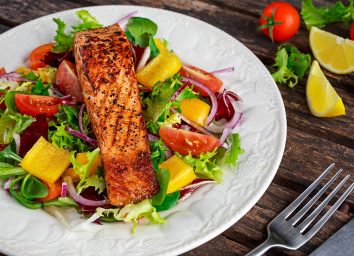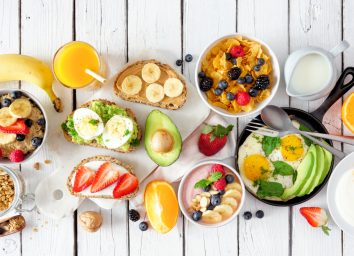Best Eating Habits to Shrink Belly Fat, Say Dietitians
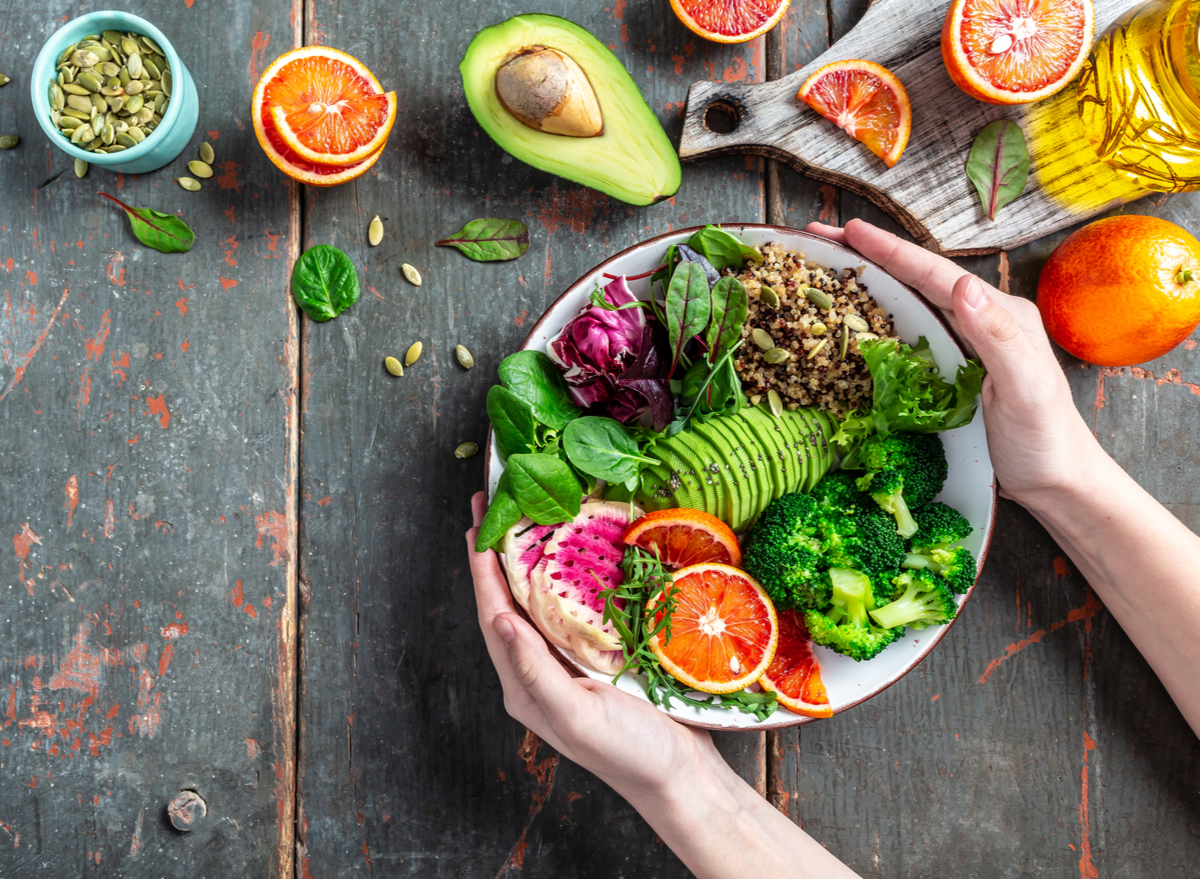
If your goal is to shrink belly fat, the first step is identifying the unhealthy eating habits that may have contributed to those extra pounds. Think: drinking sugary beverages, regular happy hours, and trips to the drive-thru.
Getting out of those perennial habits will move the needle quite a bit. But at the same time, you should get in the habit of adopting proactive, good-for-you habits that will speed up your belly fat-shrinking efforts.
Establishing habits can be challenging for the simple reason that we often forget to do what we promised ourselves we would do. That's why scientists who study motivation and habit-making suggest using cues to trigger the behaviors we wish to make habitual.
For example: If the host at a party asks if you would like a cocktail (the cue), decide that your response will always be, "I'll start with a water, please" (the behavior). Or when the waiter places the bread basket on your table at the restaurant (the cue), you automatically say, "no thanks, would you please take it away?" (the habit).
Below are dietitian-recommended eating habits to adopt to shrink belly fat. And if you're looking for recipes that'll reinforce these habits, check out Best Breakfast Recipes to Help Reduce Abdominal Fat.
Eating high-quality carbs
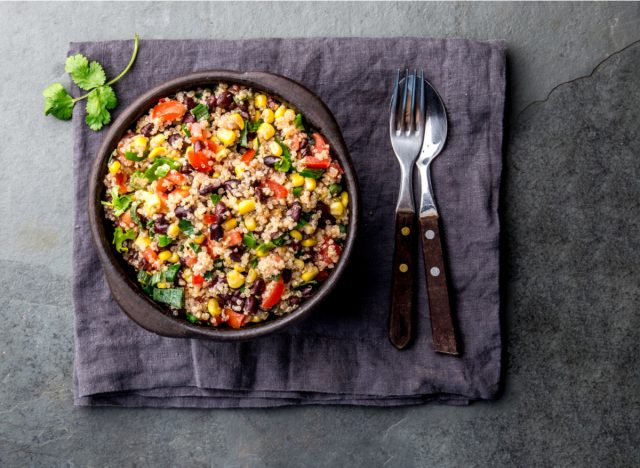
Cue: You catch yourself opening a package with a long ingredients list
The technical word for belly fat is visceral fat and it's the most dangerous type of fat because it sits deep inside us around our organs. Having a lot of it can put you at risk for heart disease and diabetes. While fried foods and fast foods contribute to this problem, "visceral fat is really tied to highly refined and processed carbs, foods related to insulin production and blood sugar that are more apt to get stored as fat in your midsection," says registered dietitian nutritionist Bess Berger, RDN, CDN, owner at Nutrition by Bess in New Jersey.
The habit to develop is eating high-quality unprocessed carbohydrates like beans, quinoa, lentils, chickpeas, and baked sweet potatoes in place of the processed carbs like bagels, pizza, pasta, white rice, and sugar-filled snacks.
Berger suggests starting the switch slowly. Choose one meal per day and replace your bread/bagel/pastry/fries with a serving of beans, legumes, or sweet potatoes then gradually switch over to mostly unprocessed carbs. "One change at a time can make a major," she says.
Snacking smarter
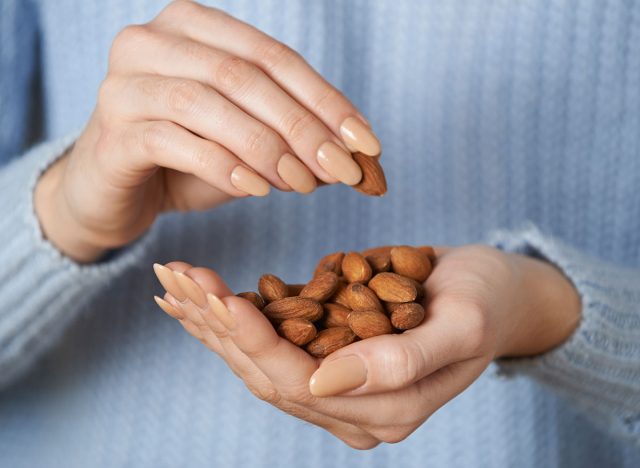
Cue: Whenever you open the cookie jar
When you reach for the cookie jar to satisfy a craving for a snack, use that prompt to grab a healthier option. Make it even easier: Fill your cookie jar with raw almonds. "Replace your chips, cookies, chocolate, cakes and candy snack with a handful of nuts, or cut vegetables dipped in hummus," says Berger. "This gives our body a huge break from trudging through processed carbs and provides refreshing, nutrient-dense, high-quality fuel and a much better shot at burning visceral belly fat."
Drinking two glasses of water before every meal

Cue: You're about to sit down to eat.
This is the first of four core practices that helped registered dietitian nutritionist Iana Muhlstein, MS, RDN, lose 100 pounds. "Water First" is all about taking advantage of the simplest and one of the most powerful nutrition habits we have," says the author of the book You Can Drop It! How I Dropped 100 Pounds Enjoying Carbs, Cocktails & Chocolate – And You Can Too!
Drinking two glasses of water before your meal makes you full so you're less likely to give into the temptations that cause overeating. "Water works like a nutritional voice of reason, helping you make better eating decisions throughout the day. It's the igniter switch to your whole weight-loss approach," says Muhlstein.
Forking your veggies first
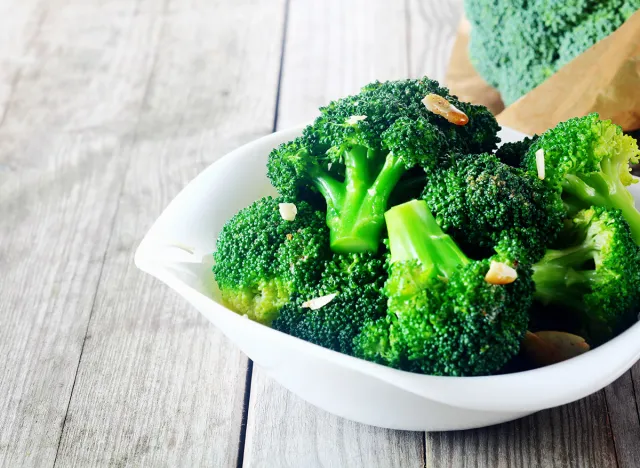
Cue: When plating your meal, fill half of it with vegetables.
If you fill half of your plate with vegetables, you'll never ignore them. It'll remind you to get into the habit of eating all your vegetables on your plate before moving on to anything else—the bread and other starches and protein.
"This habit works because vegetables are packed with fiber, they help make you feel full, and that's partly what helps with greater results in weight loss," Muhlstein says.
Studies have shown that advising people to eat large volumes of low-calorie foods like veggies was a more effective weight-loss strategy than portion control or eating less.
Satisfying a sweet tooth with fruit
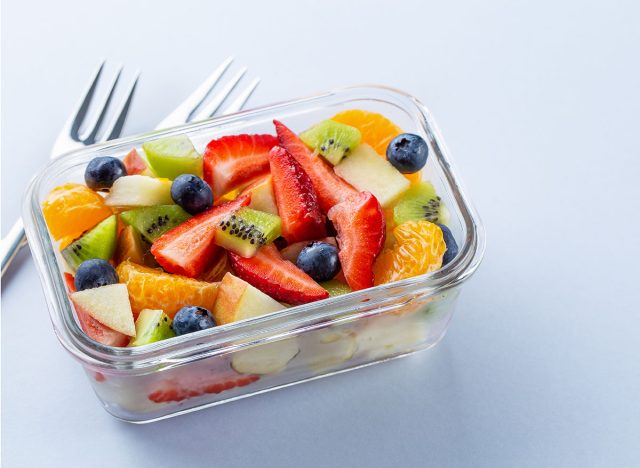
Cue: Craving cake or ice cream
If you're in the habit of needing dessert after every dinnertime, you don't even have to break the habit, but just a alter it a bit. When you crave something sweet, reach for a whole fruit. The sugar in that fruit will satisfy your craving in a healthy way.
"Fruit is dense with nutrients, water and dietary fiber, which prevent disease," says registered dietitian Lon Ben-Asher, MS, RD, LD/N, a nutritionist at Pritikin Longevity Center. Unlike most deserts made with processed flour, fiber-rich fruits have less of an impact blood sugar, which means they'll satisfy cravings rather than encourage more.
Eating earlier, rather than later
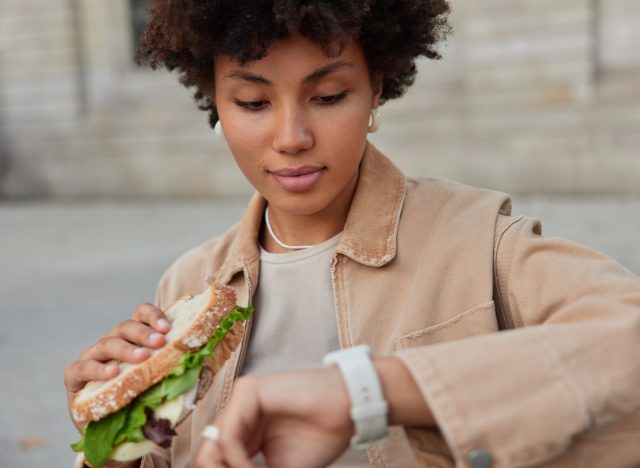
Cue: Set an alarm to sound every three to four hours to remind yourself to eat something to avoid overeating late in the day.
Many nutritionists recommend consuming 90% of total daily calories before 8 p.m. Why?Two key reasons involve cravings and poor sleep quality.
Eating later in the evening usually means it has been many hours since you've last had something to eat, which can cause extreme hunger that often leads to overeating. By eating meals at regular intervals, you regulate your blood sugar levels and avoid having to battle cravings. A critical step in shrinking belly fat is avoiding binging on food.
Secondly, inadequate sleep has been tied to weight gain because it often triggers intense morning cravings for sweets and carbohydrates. "Evidence has shown that the last meal of the day should be taken 3 hours before your bedtime; that time frame provides the body with enough time to properly digest food and avoid acidity or indigestion while you are trying to fall asleep," says Susan Kelly, RDN, a registered dietitian with the Pacific Analytics. Kelly recommends getting into the habit of monitoring what kinds of foods you eat in the evening and avoiding these:
- Grapefruit and other acidic foods can cause sleep-disrupting acid reflux.
- Cheese is "one of the worst foods before bedtime," she says,"because of high levels of tyramine, an amino acid that keeps you alert for long hours."
- Spicy foods and sauces that contain capsaicin in higher amounts. This spice increases the body temperature, which interrupts your sleep.
- Cookies and other sugary foods increase your blood sugar levels that also cause the release of the stress hormone cortisol that disrupts sleep.
Rewarding yourself, but not with food

Cue: You accomplished something meaningful.
Some of use food rewards to celebrate an accomplishment, like wrapping up a month-long work project, or maybe we feel we deserve some dessert if we've eaten healthfully all day long.
The problem with "eating as a reward" is it's not in response to hunger. It equates food rewards with happiness. And since we strive to be happy, that can lead us to rewarding ourselves with ice cream, cupcakes, and other treats incompatible with shrinking belly fat.
Instead of using food to reward your good deeds, find other rewards that you can learn to enjoy as much as doughnuts, suggest the authors of the Johns Hopkins Press Health Book Weight Loss for Life, The Proven Plan for Success.
To break out of reward-style eating patterns, they recommend making a list of 1) Things that you enjoy doing; 2.) Things that are tasks but are satisfying; and 3) Things that you have always wanted to do or used to do. From that list, you should be able to find some very motivating, calorie-free rewards. And if you still want to toast your accomplishment with a drink, be sure it's one of these Five That Melt Belly Fat Faster.

